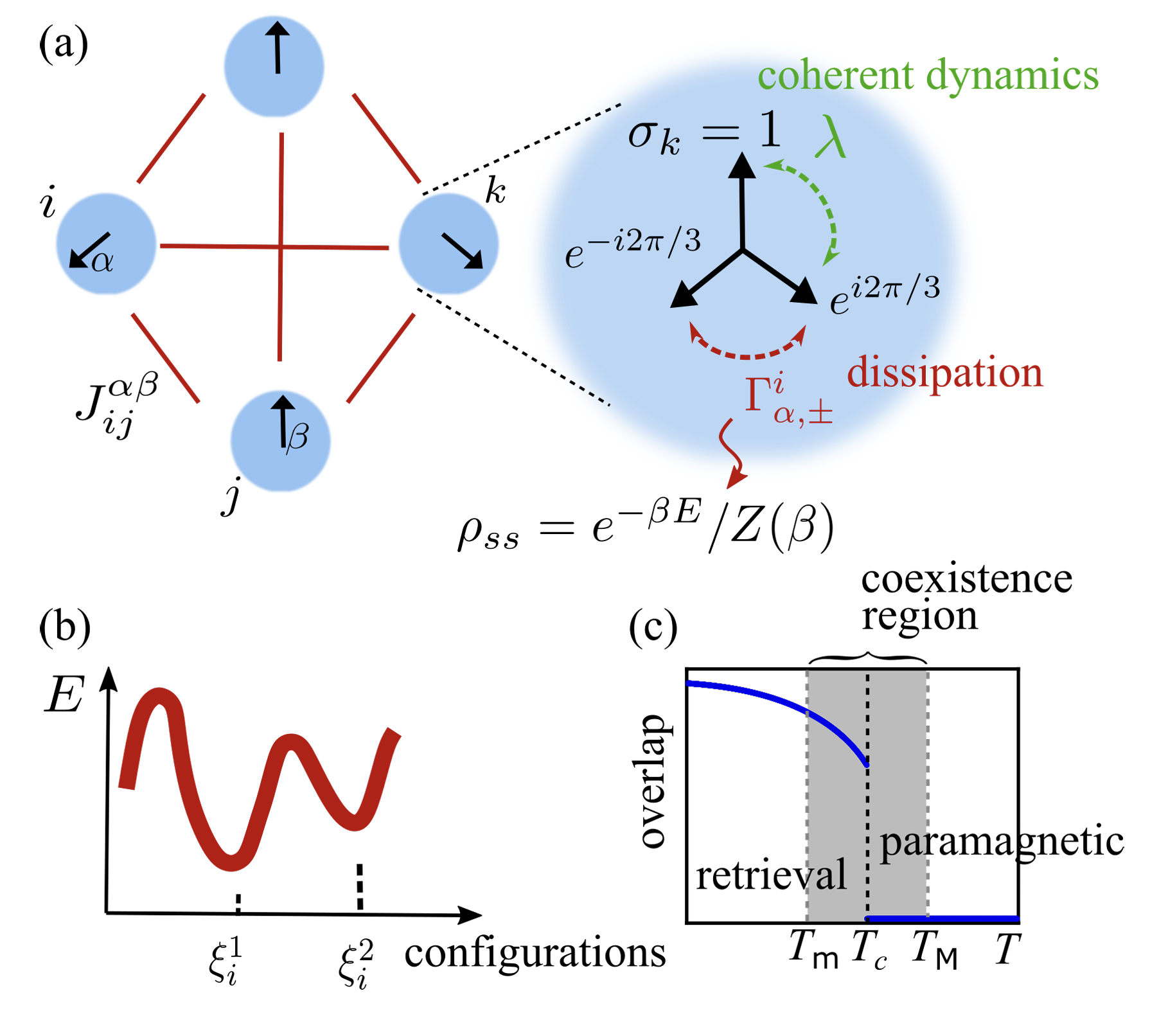In this project, in collaboration with colleagues from the University of Tübingen, our goal is to develop quantum mechanical versions of neural networks. However, we do not intend to do this from a quantum software perspective or as an ansatz to describe complex many-body quantum states. Rather we seek to engineer neural network dynamics at the level of quantum matter, which can be implemented as quantum mechanical many-body systems with a certain network connectivity structure between its quantum constituents. A promising architecture are Hopfield-type and rotor neural networks, which are a paradigmatic model for an associative memory: in such models learned patterns can be encoded in coupling constants between spins, and where imperfect patterns can be retrieved. Recently, we developed a quantum generalisation of Potts-Hopfield neural networks, and showed that these quantum networks can provide new phases of matter [1]. Complementarily, we will investigate quantum versions of multi-layer neural networks, where network dynamics takes place between quantum neurons in different layers of a network architecture. Finally, we aim to explore experimental realisability of our ideas with cold atomic systems: For example, Rydberg atom quantum simulators or trapped-ion quantum processors provide promising platforms for physical implementations of such quantum neural networks.
[1] Phase diagram of quantum generalized Potts-Hopfield neural networks, E. Fiorelli, I. Lesanovsky, and M. Müller, arXiv:2109.10140 (2021)

